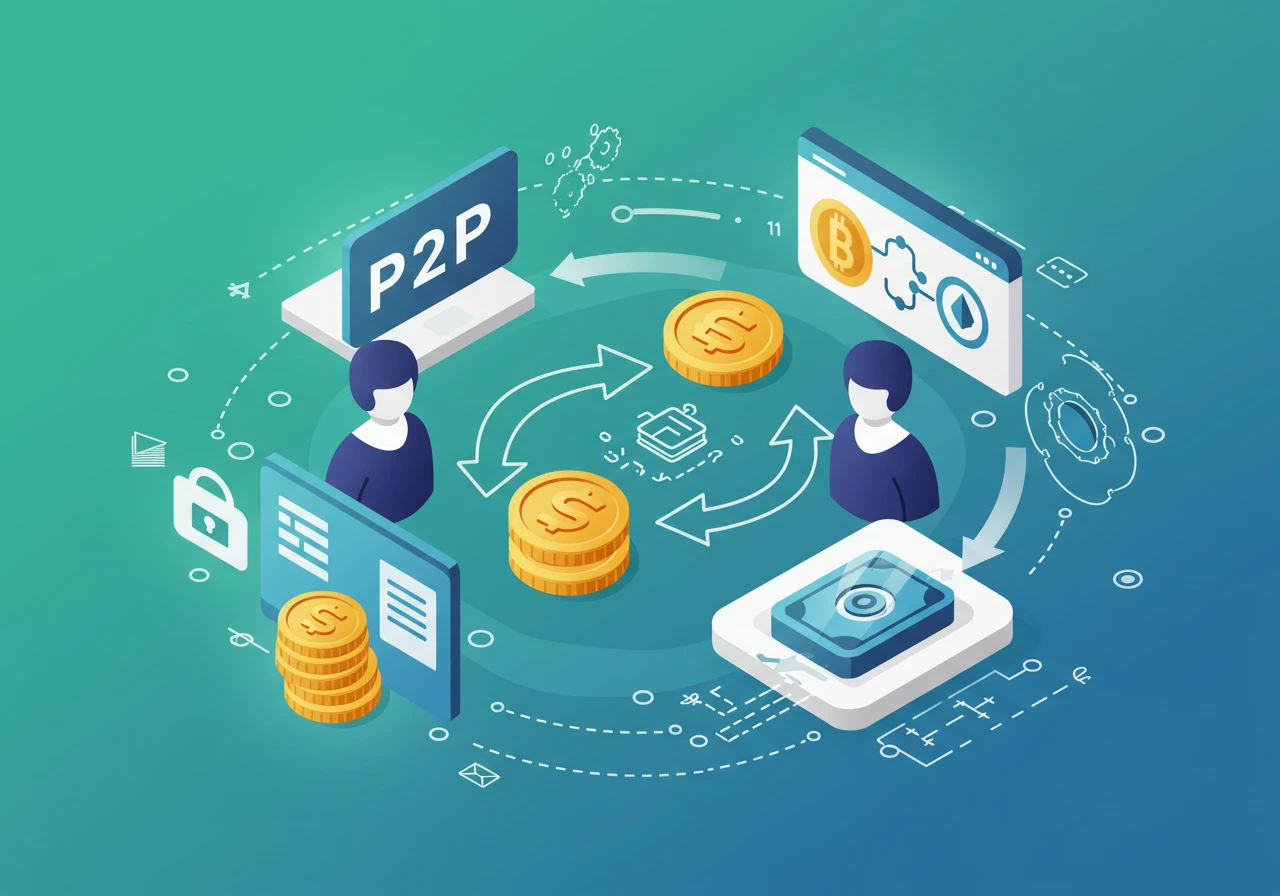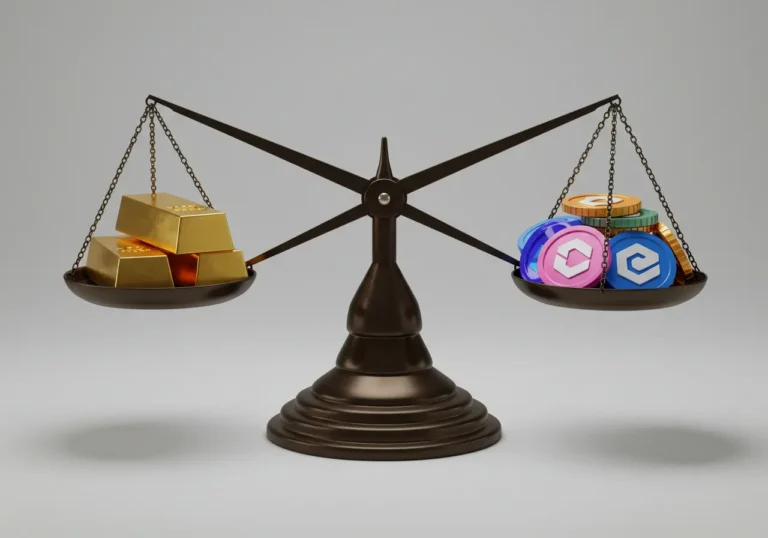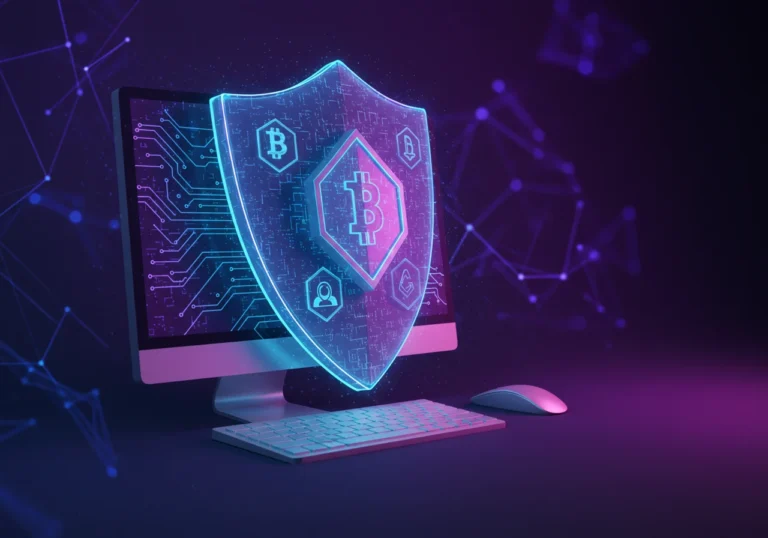Peer-to-Peer in Crypto: What It Is and Why It Matters
Reflect with me
Money and trust are closely tied. When you hand cash to a friend, you trust them. When you move crypto, someone or something must make sure the transfer is real. That “someone” can be a bank, but in crypto we often rely on a network of equals. That idea—people dealing directly with each other—is at the heart of Peer-to-Peer systems.
Peer-to-Peer lets users trade, share, and move value without a single boss in the middle. In the paragraphs below, I’ll explain how it works, why it matters, and how you can use P2P safely.
What does Peer-to-Peer mean?
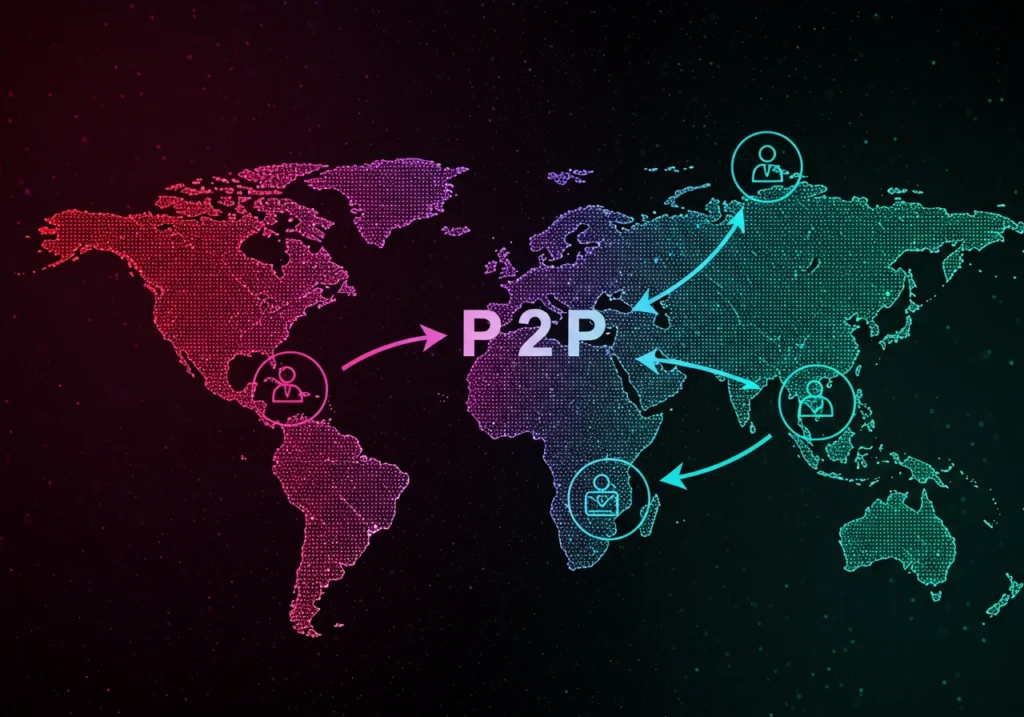
Peer-to-Peer describes a setup where participants connect directly. There is no central server telling everyone what to do. Each participant — or peer — can send, receive, and verify information with others. In crypto, peers exchange value, verify transactions, and keep copies of the ledger that records all activity.
A simple example
Imagine two people swapping stickers on the playground. They agree on the swap, exchange the stickers, and both know the trade happened. No teacher needed. That’s P2P in a nutshell. In crypto, the “stickers” are tokens or coins, and the peers use software to confirm the trade.
How P2P cryptocurrency transactions actually work
When someone sends crypto directly to another person, the transaction flows through the P2P network. Here’s the usual path:
- The sender creates a transaction in their wallet.
- The transaction signs with the sender’s private key.
- The transaction broadcasts to nearby nodes (peers).
- Nodes validate basic rules and pass it along.
- Miners or validators include it in a block (depending on the blockchain).
- The network confirms the transaction and the ledger updates.
This Bitcoin transaction process flow or similar flows on other chains rely on peers to share and check information. The more peers that verify a transaction, the stronger the network’s trust.
Why the importance of P2P in crypto is real
P2P matters because it changes who holds power. Instead of a single company or government controlling the flow, many independent peers share responsibility. That has several effects:
Resilience
If one server or company fails, the network keeps working because many peers exist. This redundancy makes the system harder to shut down.
Lower entry barriers
People can join a P2P platform without permission. That opens access to users in places where traditional financial services are limited.
Privacy and control
Direct trades can reduce the need to hand personal data to third parties. You keep more control over your funds and your information.
These points explain the core benefits of Peer-to-Peer networks: resilience, access, and user control.
Types of P2P systems in crypto
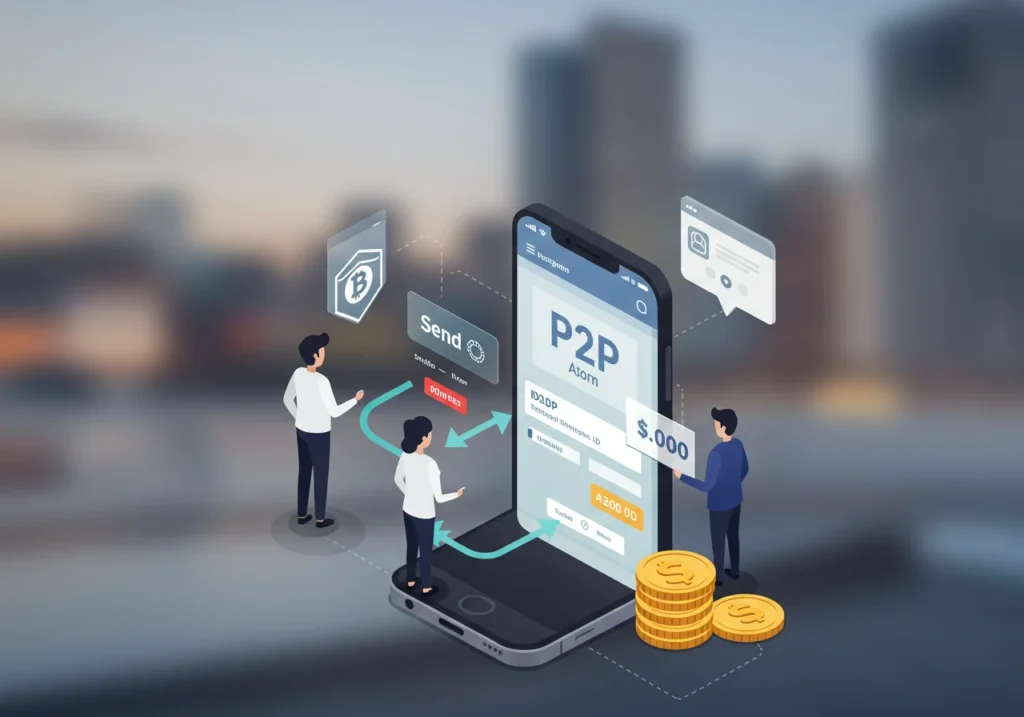
Not all P2P systems look the same. Here are the common flavors.
Decentralized exchanges and P2P marketplaces
Platforms that match buyers and sellers directly—sometimes with escrow or smart contracts—are P2P marketplaces. Users trade without custody by the platform. These are examples of Decentralized P2P platforms.
Wallet-to-wallet transfers
A simple wallet-to-wallet send is the purest form of P2P. You sign, broadcast, and peers handle the rest.
P2P lending and borrowing
Some platforms let people lend directly to one another, with smart contracts enforcing terms. No bank middleman.
Each model uses the core idea—users working directly—but adds tools to make trades safer and easier.
How P2P technology in blockchain makes this work
Blockchain is the underlying tool that ties peers together. It provides:
- A shared ledger visible to all peers.
- Rules that peers agree on (consensus).
- Immutability after confirmation (records are hard to change).
- Smart contracts to automate trustless exchanges.
When the ledger is distributed across many peers, no single party can change history without others noticing. That’s the technical backbone of P2P in crypto.
Real benefits people notice
What do ordinary users gain from P2P? Let’s keep it practical.
Faster local trades
In some regions, P2P trades let people buy or sell crypto quickly using local payment methods. That is handy when bank transfers are slow or unavailable.
Better access for the underbanked
People without a bank account can still trade crypto with others. A smartphone and a wallet are often enough.
More private interactions
P2P can reduce the amount of identity data you give to platforms. That is not full anonymity, but it adds a layer of privacy.
These are direct outcomes of the benefits of Peer-to-Peer networks.
Risks and how to stay safe

P2P is powerful, but it is not without risks. Knowing these helps you act smart.
Counterparty risk
You deal directly with another person. If someone is dishonest, you could lose funds. Use escrow services or smart contracts when possible.
Scams and fraud
P2P markets can be targets for scams. Always verify the other party, use reputation systems, and avoid off-platform agreements.
Regulatory uncertainty
Laws vary. In some regions, P2P platforms face strict rules. Be aware of local regulations to avoid surprises.
Technical risk
If you control your keys, you must protect them. Losing keys equals losing access. Consider hardware wallets for larger sums.
Choosing a safe Decentralized P2P platform
If you want to use a P2P platform, check these points:
- Does it have escrow or smart-contract protection?
- Is there a reputation or reviews system?
- Are fees clear and fair?
- Does it require excessive personal data?
- Are there dispute resolution options?
These checks help reduce the risks from counterparty and fraud.
A short, practical example
Imagine Maria wants to sell 0.1 BTC to José:
- Maria lists the offer on a P2P marketplace at a local bank transfer price.
- José accepts and the platform places Maria’s BTC in escrow (a smart contract).
- José sends the bank transfer.
- Maria confirms receipt and the escrow releases BTC to José.
- If a dispute arises, the platform’s resolution tool steps in.
That flow shows how P2P trades combine direct exchange with safety tools.
Why P2P matters for the future
Peer-to-peer models shift power to individuals. They let people exchange value with fewer intermediaries, which can lower costs and expand access. As P2P technology in blockchain grows, more services—from payments to lending—can run with fewer gatekeepers. That idea has real effects for finance, privacy, and inclusion.
FAQ
Q: What is the difference between P2P and decentralized exchanges?
A: P2P simply means peers connect directly. A decentralized exchange is one type of P2P system that uses smart contracts to match and settle trades without a central custodian.
Q: Are P2P transactions slower or faster than using an exchange?
A: It depends. Some P2P trades are instant, especially when matched locally. Others may take time due to bank transfers or verification steps. The blockchain settlement time is separate from the marketplace steps.
Q: Can I trust P2P platforms?
A: Many reputable platforms exist, but trust varies. Use escrow features, check reviews, and follow basic safety checks before large trades.
Q: How does P2P help people without banks?
A: P2P marketplaces often accept local payment methods, letting users trade crypto without a bank account. That opens financial options for the underbanked.
Q: Does P2P mean full privacy?
A: Not necessarily. P2P can reduce some data sharing, but public blockchains record transactions. For stronger privacy, combine good practices and privacy-focused tools.
Quick recap
- Peer-to-Peer means direct connections between users without a central authority.
- P2P cryptocurrency transactions let people trade directly, often with escrow or smart contracts.
- The importance of P2P in crypto includes resilience, access, and user control.
- Benefits of Peer-to-Peer networks: lower barriers, greater privacy, and fewer single points of failure.
- Look for secure Decentralized P2P platforms with escrow, clear fees, and dispute systems.
- P2P technology in blockchain uses distributed ledgers and smart contracts to automate trust.
Table of Contents

Hello, I’m Edmilson Dias, founder of CoinBringer. I created this platform to guide people through the fast-moving world of cryptocurrency with clarity and safety. With years of research in blockchain and digital security, my goal is to translate complex topics into practical knowledge, offering reliable tutorials, safety insights, and guidance for both newcomers and experienced users.
Discover more from CoinBringer
Subscribe to get the latest posts sent to your email.

